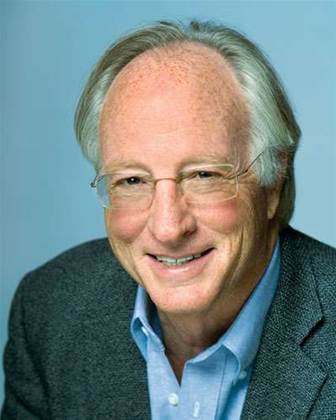Is it just the plant you need accredited? Or process?

KB: Seventy percent of failures are not equipment failures. They are caused by people. If you do not have good human controls, you can be in trouble. One of the most common human failures in a Tier 4 data centre is when humans confuse the two sets of redundant equipment. Somebody plugs A into system B instead of A. Or the vendor is working in the data centre and doesn't comply with the rules, and shuts things off in an unintended way.
Are Australia's major data centres accredited?
KB: We see tremendous interest in Australia and more broadly in the Asia Pacific. We have projects underway.
Do you have resources in the region to inspect and consult with local data centres?
KB: As it happens we have been a part of the LEED - Leadership in Energy Efficient Design - an accreditation which consultants can attach to their name. A person can become an Accredited Tier Designer, at a certain standard. We have certified 184 engineers in under 12 months and the next course we are holding is in Taiwan. There is only one person in Asia in Taiwan, and we are running a course in Taiwan next week. We hope 15 or 20 come out of that.
A lot of data centres in Australia are being built in shipping containers...
KB: I'll stop you right there. Container data centres is a misnomer. They are container computer rooms. A data centre is composed of two or three different systems - the mechanical and electrical system that drives it and the computer floor and the comms gear moving information in and out. A computer room represents twenty percent or less of the total cost of a data centre. Eighty per cent of the cost is somewhere else.
Now, a computer room in a container is cheap. But it is the mechanical and electrical plant that drives it. Minimising space in a computer room doesn't save a lot of money.
So what will you be speaking about in Sydney?
KB: I will be talking about the meltdown of the benefits we have been enjoying from Moore's law. Moore's Law says everything gets cheaper and cheaper, but what we have not been paying attention to is that the energy consumption is not dropping at the rate of the performance increase. We are spending more and more on energy - the fundamental reason the cost of data centres has risen so dramatically. The reason the cost of IT is rising is sitting in a line item called the data centre.
Where are the costs? The operations cost like power bills or the capital cost of the plant?
KB: Focusing on the utility cost is significant but not as important as the capital costs. It is the cost of providing the place in the computer room, the rack where you put a server. A rack server is on average between US$1300 - US$2000 a server. Now - the capital cost to provide the real estate, power and cooling is US$16,000 per server unit. It is larger by a factor of eight. Electricity to run that server is US$500 a year. So the capital cost of that US$16,000 of rack space with a 15 year life is US$1000 a year. That is the cost of the utilities.
The total cost is rarely appreciated, because it shows up in so many different places.
So you want to talk about data centre efficiency?
KB: I am going to give a five-step system - what I call the NNDC strategy - the No New Data Centre strategy - that could save US$120,000 a rack over four years. By NNDC I mean that you won't need to build a new data centre.
And these steps, they are relatively painless. It's not a new spending program.
Why aren't people doing it already?
KB: Efficiency has no constituency. If the average tenure of a CIO is 30 months, the CIO doesn't have the time to make IT truly efficient, that might take three or four years. Efficiency means upsetting people by eliminating waste.
Cutting every point of power consumption in a data centre in half is truly possible. But it has got to be painful.
Painful, but simple. When you hear them, you'll hit your head against the wall, they are so simple.
So can you start us off with one tip today?
KB: OK, just one. How about you turn off your comatose servers. Some of them are still consuming energy but not doing anything. If you bothered to take a look you might be able to take ten to thirty percent off the load.
There are gold nuggets lying all over the server room floor if someone is willing to bend over and pick them up.
Kenneth Brill is the keynote speaker at the DC Strategics conference in Sydney on August 13. His topic - the "meltdown of the benefits of Moore's Law", will address the increase in capital costs in most data centres.









.png&w=100&c=1&s=0)

 Digital Leadership Day Federal
Digital Leadership Day Federal
 Government Cyber Security Showcase Federal
Government Cyber Security Showcase Federal
 Government Innovation Showcase Federal
Government Innovation Showcase Federal
 Digital NSW 2025 Showcase
Digital NSW 2025 Showcase












_(1).jpg&h=140&w=231&c=1&s=0)



